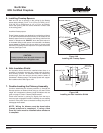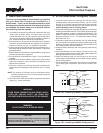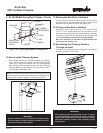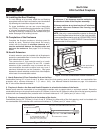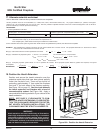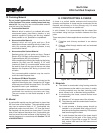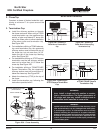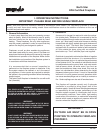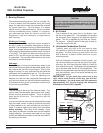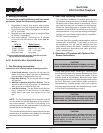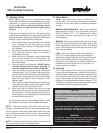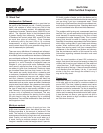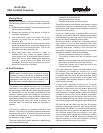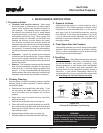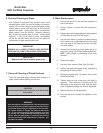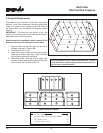Special offers from our partners!

Find Replacement BBQ Parts for 20,308 Models. Repair your BBQ today.

480-1081 22 4-03
North Star
EPA Certied Fireplace
3. Burning Process
Fire requires three things to burn: fuel, air and heat. So,
if heat is robbed from the replace during the drying
stage, the new load of wood has reduced the chances
for a good clean burn. For this reason, it is always
best to burn dry, seasoned rewood. We do not advise
burning unseasoned wood, however if it happens,
you must open the Slide Air Control and burn the
fireplace at a high burn setting for a longer time to
start it burning.
Kindling or 1st stage:
It helps to know a little about the actual process of
burning in order to understand what goes on inside a
replace. The rst stage of burning is called the kindling
stage. In this stage, the wood is heated to a temperature
high enough to evaporate the moisture which is present
in all wood. The wood will reach the boiling point of
water (212°F) and will not get any hotter until the water
is evaporated. This process takes heat from the coals
and tends to cool the replace.
2nd stage:
The next stage of burning, the secondary stage, is the
period when the wood gives off ammable gases which
burn above the fuel with bright flames. During this
stage of burning it is very important that the ames be
maintained and not allowed to go out. This will ensure
the cleanest possible re. If you are adjusting your
replace for a low burn rate, you should close down the
air to the point where you can still maintain some ame.
If the ames tend to go out, the replace is set too low
for your burning conditions.
Final stage:
The nal stage of burning is the charcoal stage. This
occurs when the ammable gases have been mostly
burned and only charcoal remains. This is a naturally
clean portion of the burn. The coals burn with hot
blue ames.
It is very important to reload your replace while enough
lively hot coals remain in order to provide the amount
of heat needed to dry and rekindle the next load of
wood. It is best to open the air control for a short while
before reloading. This livens up the coalbed. Open
door slowly so that ash or smoke does not exit replace
through opening. You should also break up any large
chunks and distribute the coals so that the new wood is
laid evenly on hot coals.
4. Air Control
The air enters at the upper front of the rebox, near
the top of the glass door. This preheated air supplies
the necessary fresh oxygen to mix with the unburned
gases. This air is regulated by the Slide Air Control.
For more air - slide the control to the right, for less air
- slide the control to the left.
CAUTION:
Fireplace operation does require air. Do not take air
from other fuel burning appliances which can result in
improper venting (smoking) or air dilution. Always provide
adequate makeup air.
Slide Air Control
Left-Close Right-Open
CLOSE
OPEN
Outside Air Knob
Low
Position
Meet
Resistance
ACC Fully
Engaged
5. Automatic Combustion Control
Typically, when you build a fire, you need to open
the controls to give the re more air so the wood will
get going. You then have to go back to the unit and
shut it down so it doesn’t overre and burn up your
wood too quickly.
With the Automatic Combustion Control system, you
can set the replace to high (all the way to the right),
start your re, and then move the Slide Air Control to
their desired burn level. The replace will automatically
go to that level after the re is fully established. This
allows for less interaction with the re by the homeowner
and more efcient use of fuel while maintaining the
desired heat output.
IMPORTANT! As you move the control rod to the
right, about three-fourths of the way you will feel
some resistance. You must move past that resistance
approximately 3/4” to fully engage the Automatic
Combustion Control (ACC) sytstem



